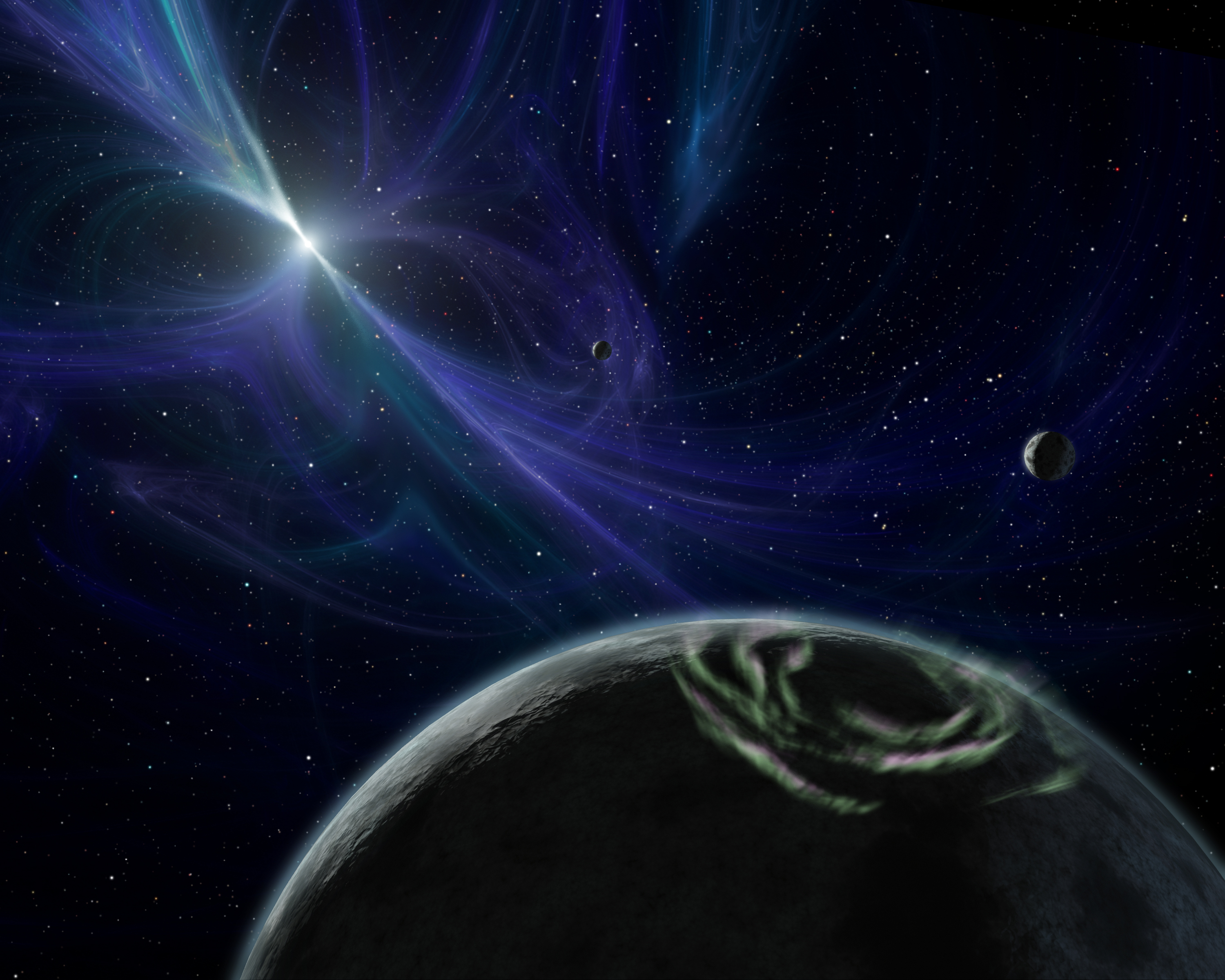
#Astro
# What are Neutron Stars?
Neutron Stars are small, compact objects that are formed by [[Core Collapse Supernovae - The Big Blast (Astro)]]. Each of these objects is kept in equilibrium through a phenomenon known as [[Degeneracy - States and Pressure (Nuclear & Quantum)]], where the pressure of the neutron stars is so great gravity cannot continue to pull on the remnant star. These objects are some of the most mysterious objects in astronomy, ranging from being potential sources of fast radio bursts to sources of high-energy X-Ray or gamma radiation!
//neutron star
infalling matter hits the neutron core with so much force it forces protons and electrons together to create neutrons & neutrinos
--> once the core becomes hard enough it can resist the exterior layers of the star, leading to them bouncing off.
--> however, the shockwave is not enough to blow the star up, meaning the neutrinos created by the beta plus decay in the neutron star provides the "push" needed to allow supernovae!
--> once the neutron star is create, it is held up against its own gravity by "neutron degeneracy pressure". there is no chandrasekhar limit for neutron stars, but there's a theory that 3 solar masses is the upper limit for core mass
--> a 1 solar mass core the size of the Earth --> collapses to a diameter 20km wide in less than a second, with a speed 1/4th of that of light!
//neutrino interactions in neutron stars
--> although neutrinos are weakly interacting, there are so many of them in the core and have so much energy that they allow the outer layers to blow away!
feynman diagram neutrino interaction. we need to use a Z boson, the chargeless weak force interaction carrier, as neutrinos do not have charge and there is a mediating force between it.
![[Pasted image 20230711110516.png]]
# Neutron Star Surface Dynamics
## The Gravitational Acceleration on its Surface
typical neutron star mass --> 6 x 10^30 kg
density of a neutron star --> 4 x 10^17 kg/m^3
time to calculate this for a neutron star!
$r = ^3\sqrt{\frac{M}{\frac{4}{3}\pi\rho}}$
Substitute:
$r = ^3\sqrt{ \frac{6\times10^{30}}{\frac{4}{3}\pi \; 4 \times 10^{17}}} $
$r = 15300m$
Substitute into the gravitational acceleration rule:
$F = \frac{6.67\times10^{-11}\times6\times10^{30}}{15300^2}$
$F = 1.71 × 10^{12}N$
# Neutron Star Anatomy
/anatomy of neutron stars
- what are they?
- densest astrophysical objects we currently know of (excluding black holes)
- typical surface is 600,000K
- magnetic field is 10^8 - 10^15 times stronger than the Earths, and gravitational field incredibly strong (200 billion times Earth's)
- usually the size of a small city, very small
- conservation of angular momentum causing them to spin rapidly
- cross section of a neutron star![[Pasted image 20230714091333.png]]
## The Pulsations of a Pulsar
- pulsars: neutron stars can have strong magnetic field lines which are open at the poles (pointing away from the neutron star) , beaming high-energy particles away
- if the spin axis and magnetic field axis are misaligned (like our Earth's!) then we observe flashes of light each time the beam points toward us (lightouse effect)
- approximating age of pulsar given by formula: $T \approx \frac{P}{2\dot{P}}$
- Where $P$ is the period of the pulsar oscillations, measuring for period decay
- pulsar magnetic field lines may experience **magnetic reconnection**, launching high-energy particles trapped above the reconnected field into space. this happens on our sun too - when the loops above a sunspot collapse, notice how a chunk of solar matter is flung into space.